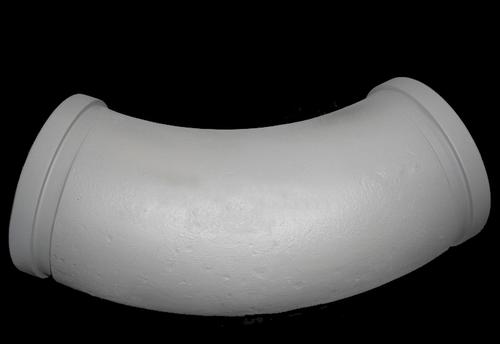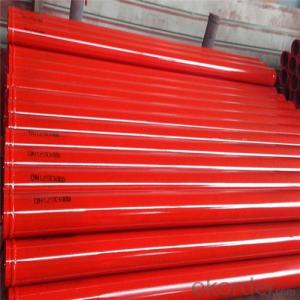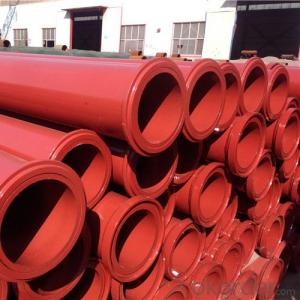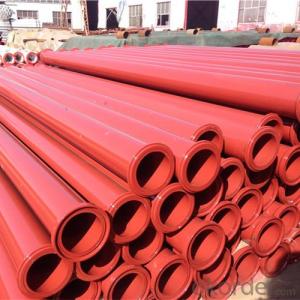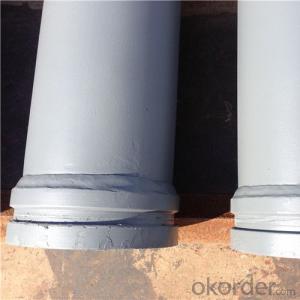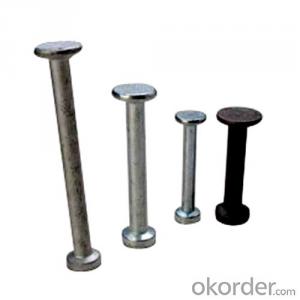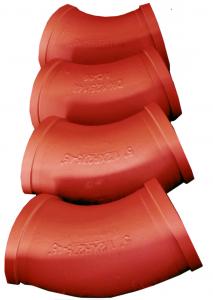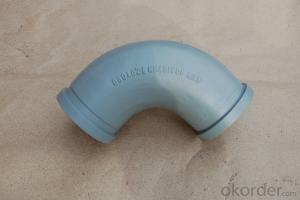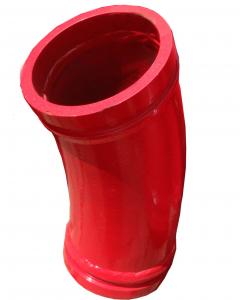Concrete Pump Truck Parts Elbow Bend DN125 R180 90DGR 148MM Mn13-4 Casting
- Loading Port:
- China Main Port
- Payment Terms:
- TT OR LC
- Min Order Qty:
- -
- Supply Capability:
- -
OKorder Service Pledge
Quality Product, Order Online Tracking, Timely Delivery
OKorder Financial Service
Credit Rating, Credit Services, Credit Purchasing
You Might Also Like
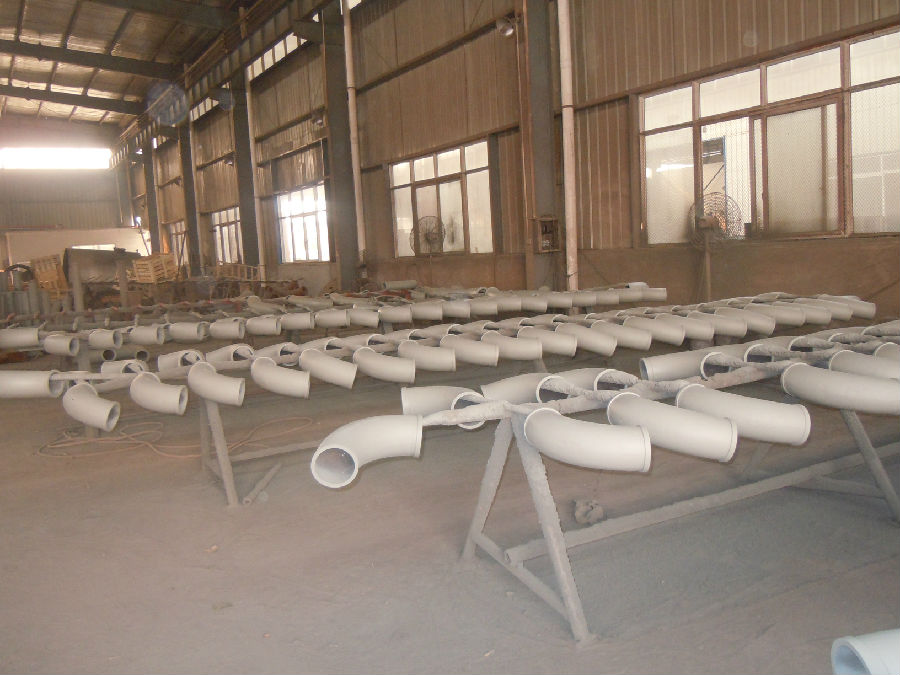

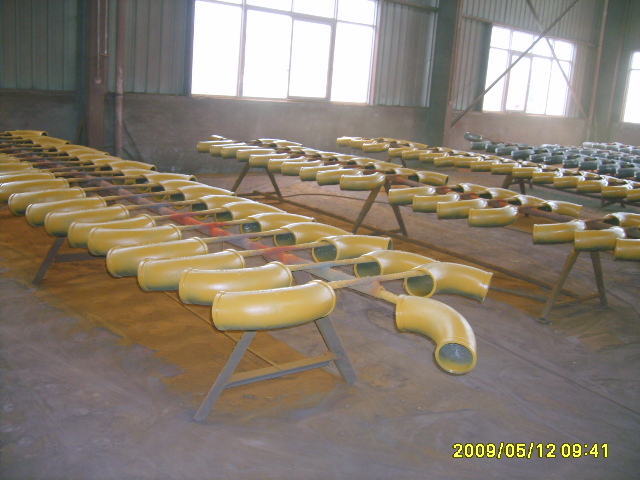
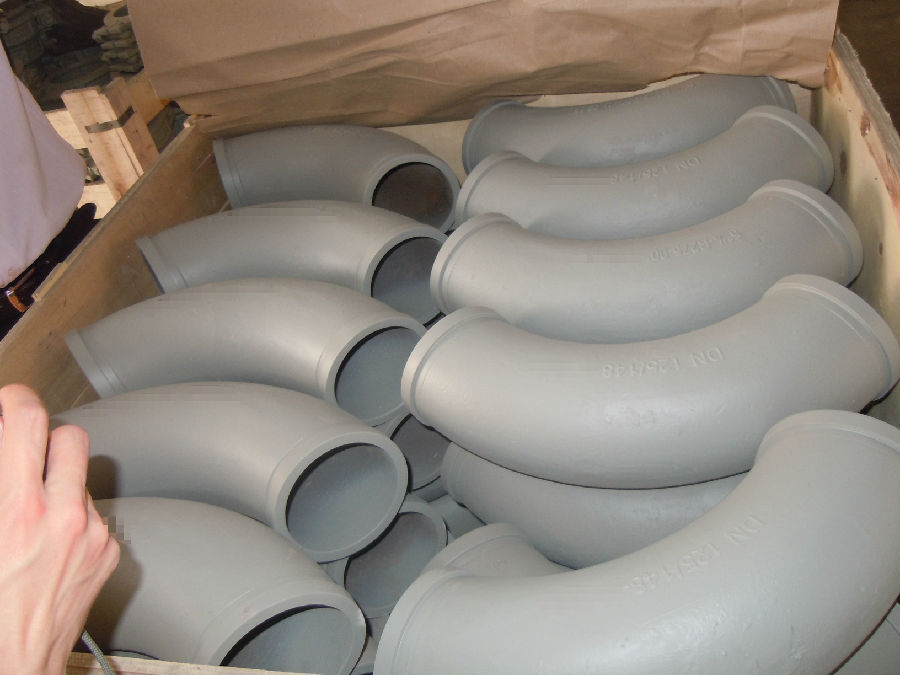
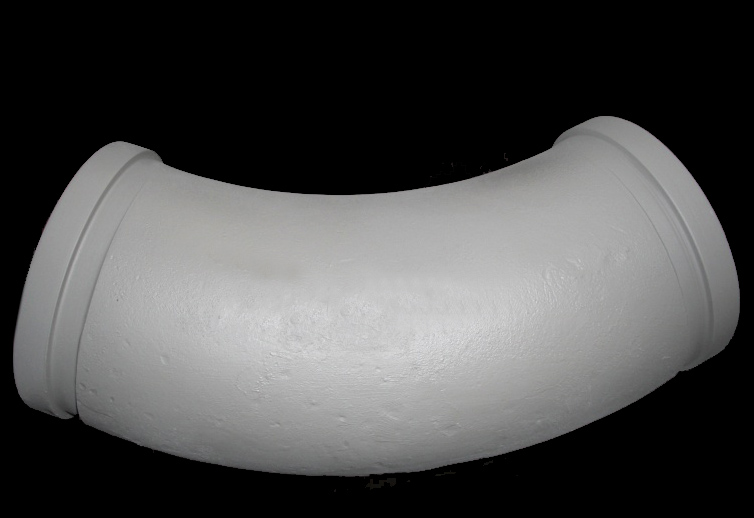
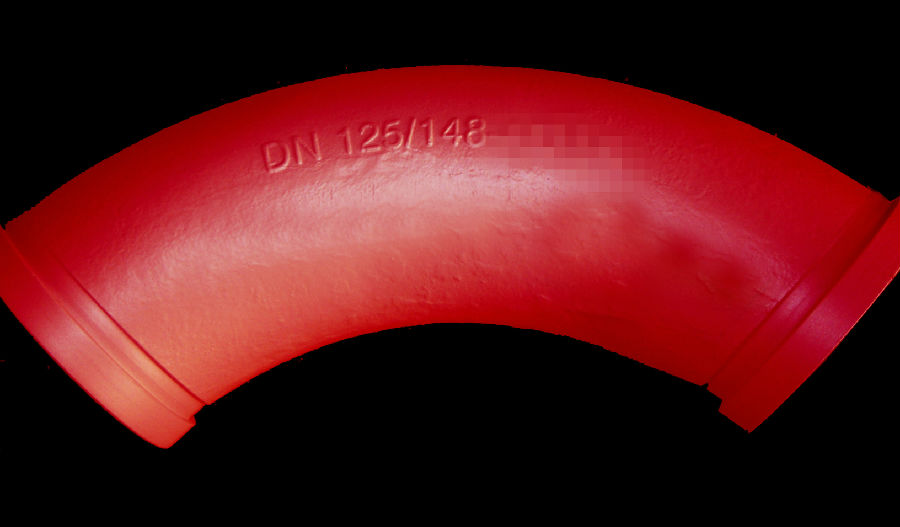
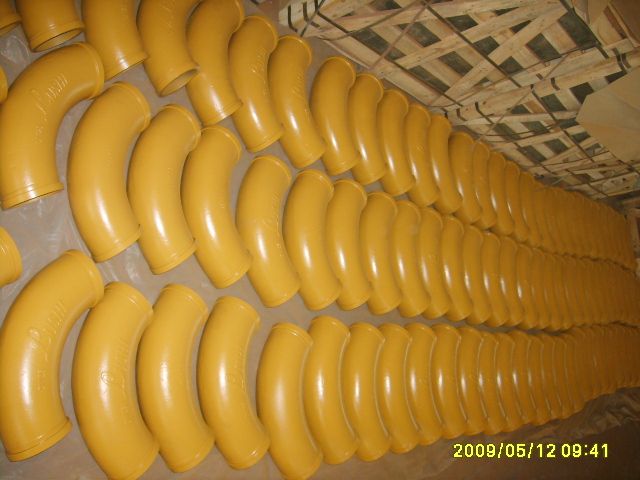
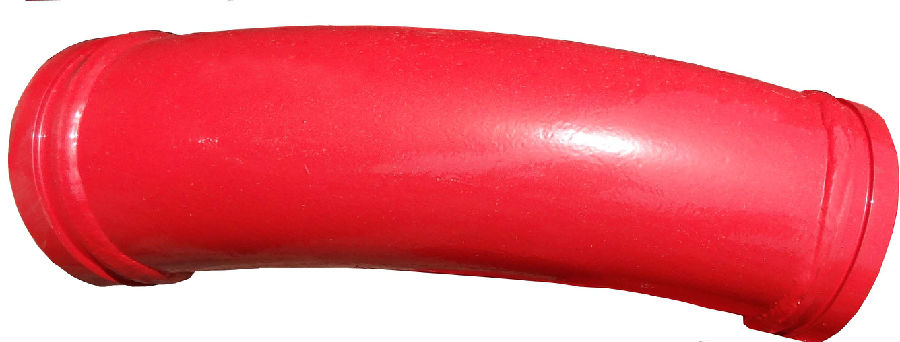
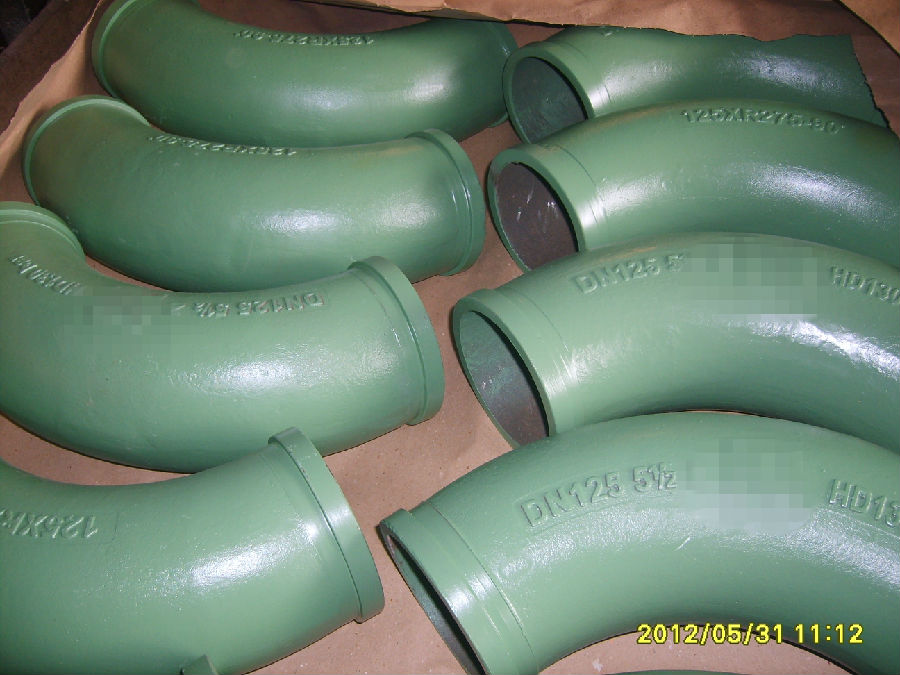
- Q: What are the advantages of using pre-assembled spare parts for concrete pumps?
- There are multiple benefits to utilizing pre-assembled spare parts for concrete pumps. To begin with, the use of pre-assembled spare parts guarantees a swift and efficient replacement process. As these parts come already assembled, they can be effortlessly installed without the need for additional time or effort to assemble them. This helps to reduce downtime and increase productivity on construction sites, as the concrete pump can be swiftly repaired and put back into operation. Additionally, the utilization of pre-assembled spare parts ensures a high level of quality and compatibility. These parts are produced by the original equipment manufacturer (OEM) or authorized suppliers, guaranteeing that they meet the necessary standards and specifications. By employing authentic pre-assembled parts, the performance and longevity of the concrete pump are maintained, minimizing the risk of malfunctions or breakdowns. Another advantage is the cost-effectiveness of pre-assembled spare parts. While the initial cost of these parts may be slightly higher than individual components, they often prove to be more cost-effective in the long run. By purchasing pre-assembled parts, construction companies can avoid the extra costs associated with assembly, such as labor and time. Additionally, using high-quality pre-assembled parts reduces the need for frequent replacements and repairs, saving money on maintenance and downtime expenses. Furthermore, pre-assembled spare parts offer convenience and reliability. Construction projects frequently have strict deadlines, and any delays can be expensive. By having pre-assembled spare parts readily available, construction teams can promptly address any breakdowns or failures, minimizing disruptions to the project timeline. Additionally, the reliability of these parts ensures that the concrete pump will consistently and efficiently operate, reducing the risk of unexpected issues on the construction site. In conclusion, the advantages of utilizing pre-assembled spare parts for concrete pumps encompass quick and efficient replacement, high quality and compatibility, cost-effectiveness, as well as convenience and reliability. By adopting these pre-assembled parts, construction companies can ensure smooth operations, minimize downtime, and maximize productivity on their projects.
- Q: How do I properly maintain and replace hydraulic hoses in concrete pump spare parts?
- To ensure the smooth functioning and longevity of your equipment, it is crucial to properly maintain and replace hydraulic hoses in concrete pump spare parts. Here are some effective steps you can take: 1. Conduct regular visual inspections to identify any signs of wear, damage, or leaks. Look for bulges, cracks, abrasions, or fraying. Pay attention to fittings, connections, and bends in the hose. 2. Implement a preventive maintenance schedule to reduce the chances of unexpected hose failure. Clean the hoses regularly to remove dirt, debris, and concrete residues that may cause abrasion or clogging. Use a mild detergent and water, and ensure thorough drying. 3. Store hydraulic hoses in a clean, dry, and temperature-controlled environment when not in use. Protect them from direct sunlight, extreme temperatures, and chemicals to avoid degradation. 4. Handle hydraulic hoses with care to prevent damage. Avoid dragging them on rough surfaces or sharp edges that can cause cuts or abrasions. Minimize excessive kinking or twisting, as it weakens the internal structure. 5. Replace hydraulic hoses promptly upon noticing signs of wear, damage, or leaks. Do not wait for hose failure, as it can lead to costly downtime and safety hazards. Follow the manufacturer's recommendations for replacement intervals. 6. Use high-quality replacement hoses that are compatible with your concrete pump. Choose hoses that meet industry standards and specifications for durability in concrete pumping conditions. 7. Properly install replacement hoses, ensuring correct routing and secure connections to fittings. Use appropriate tools and techniques to tighten fittings, avoiding over-tightening that can damage the hose or fittings. 8. Provide regular training to your staff on proper maintenance, inspection, and replacement procedures for hydraulic hoses. This will enhance their knowledge and skills, reducing the risks of improper handling or installation. By following these steps, you can effectively maintain and replace hydraulic hoses in concrete pump spare parts, ensuring the safety and efficiency of your equipment. Always refer to the manufacturer's guidelines and seek professional assistance when needed.
- Q: How often should concrete pump control boxes be inspected and replaced?
- Concrete pump control boxes should be inspected regularly to ensure proper functioning and safety. The frequency of inspections and replacements will depend on various factors including the usage of the concrete pump, the operating conditions, and the manufacturer's recommendations. In general, it is advisable to inspect the control box at least once a year or as per the manufacturer's guidelines. However, if the concrete pump is used extensively or subjected to harsh operating conditions, more frequent inspections may be necessary. This includes inspecting the electrical connections, switches, buttons, and indicators for any signs of wear, damage, or malfunction. Additionally, it is important to conduct inspections after any significant maintenance or repair work on the concrete pump, as well as after any incidents or accidents. Regular inspections help identify any potential issues early on, allowing for timely repairs or replacements, thereby minimizing the risk of breakdowns or accidents. As for replacements, control boxes should be replaced if they are damaged beyond repair or if they are outdated and no longer meet safety standards. It is important to consult the manufacturer or a qualified professional to determine the appropriate replacement schedule based on the specific conditions and usage of the concrete pump. Remember, regular inspections and timely replacements of concrete pump control boxes are crucial to ensure the safe and efficient operation of the equipment.
- Q: How to operate the concrete pump?
- Pumping equipment parking brake and lock brake should be used at the same time, the tire should be wedge tight, water supply should be normal, and the tank should be filled with clean water, the hopper should be no debris, the lubrication points should be lubricated properly
- Q: How much is the pump for a month?
- In the mud, the price is about 25 yuan per square, according to my experience, more than 175000 points per month can pump 7000 yuan, totaling $
- Q: What are the different types of concrete pump control system sensors?
- There are several different types of sensors used in concrete pump control systems to ensure smooth and efficient operation. These sensors are designed to monitor various aspects of the pump's performance and provide real-time feedback to the control system. Some of the common types of sensors used in concrete pump control systems include: 1. Pressure Sensors: These sensors are used to measure the pressure of the concrete being pumped. They are typically installed in the discharge line and help to ensure that the pump is operating within the desired pressure range. Pressure sensors are crucial in preventing over-pressurization and potential damage to the pump or pipeline. 2. Flow Sensors: Flow sensors are employed to measure the flow rate of the concrete. By monitoring the volume of concrete passing through the system per unit of time, these sensors enable the control system to regulate the speed and output of the pump accordingly. Flow sensors help in maintaining a consistent and controlled flow of concrete during pumping operations. 3. Level Sensors: Level sensors are utilized to monitor the level of concrete in the hopper or storage tank. These sensors provide information to the control system about the concrete volume, ensuring that the pump is not running dry or becoming overloaded. By maintaining the appropriate level of concrete in the hopper, level sensors help to prevent pump cavitation or blockages. 4. Proximity Sensors: Proximity sensors are used to detect the position of various moving parts in the pump system, such as the boom or outriggers. They provide feedback to the control system, ensuring that the pump operates safely and avoids any potential collisions or obstructions. Proximity sensors play a crucial role in preventing accidents and protecting both the equipment and personnel. 5. Temperature Sensors: Temperature sensors are employed to monitor the temperature of the concrete mix. These sensors help to ensure that the concrete remains within the desired temperature range during pumping, as extreme temperatures can affect the workability and curing process. By maintaining the optimal concrete temperature, temperature sensors contribute to the quality of the final product. Overall, these sensors work together to provide precise and reliable feedback to the control system, allowing for efficient and safe operation of the concrete pump. By continuously monitoring and adjusting various parameters, the sensors help to optimize pumping performance and enhance the overall productivity of concrete placement projects.
- Q: Which height of concrete pump is the most practical?
- The power of the concrete pump truck engine power is transmitted to the hydraulic pump or rear axle through the power transfer case, push the piston to drive the hydraulic pump concrete pump
- Q: If the concrete pump valve jam how to judge and deal with?
- When the pipe is blocked, the pump shall be taken repeatedly, reversing the pump, and gradually pump the concrete at the pump's outlet back to the hopper and mix again
- Q: Can I reuse old concrete pump spare parts?
- Yes, old concrete pump spare parts can be reused as long as they are in good condition and meet the required specifications for the pump. However, it is important to properly inspect and test the parts before reuse to ensure they will function safely and efficiently.
- Q: What is the function of a concrete pump remote control antenna?
- The function of a concrete pump remote control antenna is to establish a wireless connection between the remote control device and the concrete pump. This allows the operator to remotely control the various functions of the concrete pump, such as starting and stopping the pump, adjusting the speed and flow of the concrete, and controlling the boom movements. The antenna receives signals from the remote control device and transmits them to the concrete pump, enabling the operator to control the pump from a safe distance. This helps improve efficiency, accuracy, and safety on construction sites by allowing the operator to have better visibility of the pump and its surroundings while still maintaining full control over its operations.
Send your message to us
Concrete Pump Truck Parts Elbow Bend DN125 R180 90DGR 148MM Mn13-4 Casting
- Loading Port:
- China Main Port
- Payment Terms:
- TT OR LC
- Min Order Qty:
- -
- Supply Capability:
- -
OKorder Service Pledge
Quality Product, Order Online Tracking, Timely Delivery
OKorder Financial Service
Credit Rating, Credit Services, Credit Purchasing
Similar products
Hot products
Hot Searches
Related keywords



